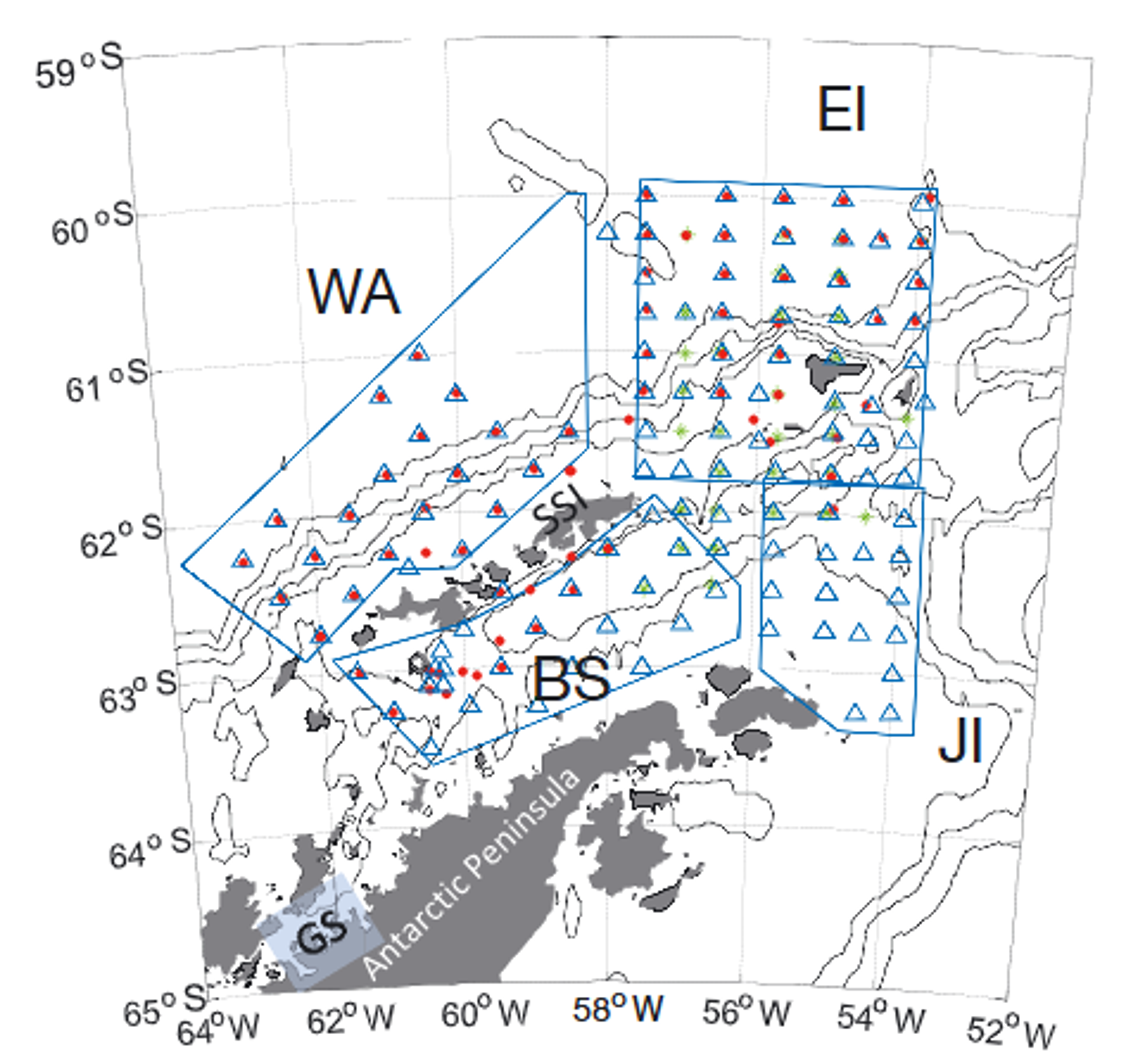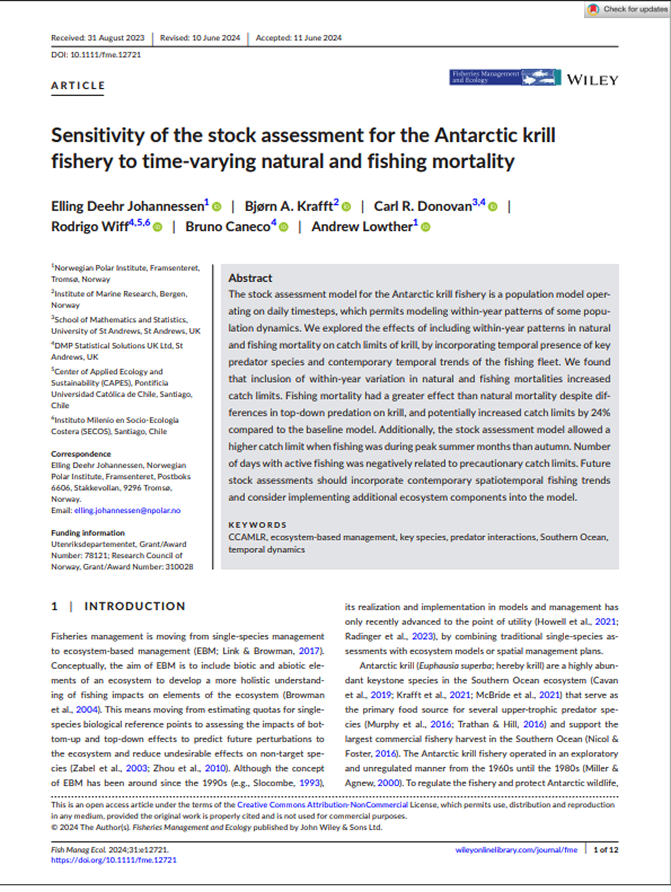Antarctic ecosystem
Fisheries management
Biomass
Climate
Krill (Euphausia superba)
Overwinter habitat selection by Antarctic krill under varying sea-ice conditions: implications for top predators and fishery management
Summary
This study presents the first winter acoustic measurements of Antarctic krill populations around the South Shetland Islands, uncovering striking seasonal movement patterns from deep ocean waters to coastal regions. Krill biomass in Bransfield Strait reached approximately 5.5 million tonnes during winter 2014, roughly ten times higher than typical summer levels. This coastal concentration happened regardless of sea-ice coverage, showing that krill spend winter months in nearshore basins whether or not ice is present. Crabeater seals were found in areas with heavy ice cover and high krill densities, while Antarctic fur seals had more widespread distributions. Climate change is shrinking sea ice in traditional krill habitat areas, potentially increasing competition between fishing operations and predators while changing ecosystem dynamics.

1
Research area showing sampling locations around the South Shetland Islands (SSI) during winter surveys in 2012 (green cross), 2013 (red dot), and 2014 (green triangle). Boxed areas indicate regions where Antarctic krill population estimates were calculated, including the west shelf (WA), Elephant Island (EI), Bransfield Strait (BS), and Joinville Island (JI) zones. Gerlache Strait (GS) is located in the southwestern-most section of the map.Key Findings
1
First winter acoustic population measurements for Antarctic Peninsula krill. 2
Bransfield Strait winter population: ~5.5 million tonnes (compared to 520,000 tonnes summer average). 3
Ten-fold increase in krill abundance in coastal waters during winter months. 4
Krill concentration occurred regardless of sea-ice coverage conditions in 2014. 5
Crabeater seals gathered in areas with over 70% ice cover and high krill densities. 6
Antarctic fur seals spread more widely across different ice conditions. 7
Winter coastal concentration represents 92% of average summer population for entire research area. 8
Climate change making winter krill concentrations more accessible to fishing operations.

